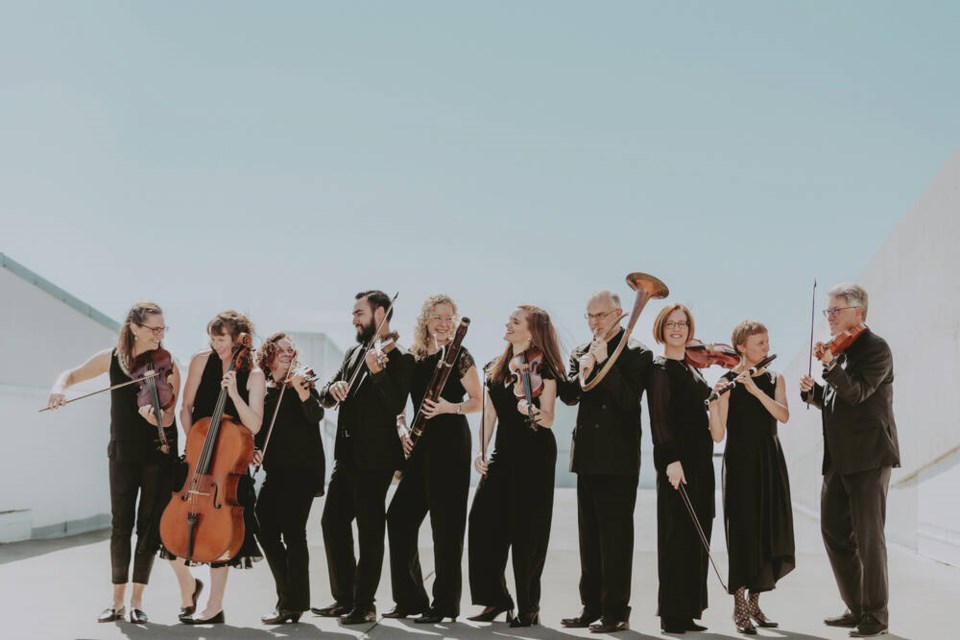IN THE TREES
Where: St. John the Divine, 1611 Quadra St.
When: May 5, 8 p.m.
Tickets: $32 from
Soile Stratkauskas was raised in Joensuu, a picturesque city in Finland known for its lush, tree-lined terrain. It’s a relatively small town, but one that has much in common with Victoria, where she relocated 13 years ago.
Environmental stewardship is top of mind for many residents in both cities, she said, and for her final offering as artistic director of Victoria Baroque, the flautist planned a subtle but meaningful farewell, one that would properly articulate her passion for the environment. “That’s how I grew up — loving being in nature,” she said of In the Trees, which takes place Sunday at St. John the Divine.
In the Trees is creativity writ large, with several media (music, photography, poetry) and personalities (poet Lorna Crozier, photographer TJ Watt) in the mix at the event. Stratkauskas will perform alongside musicians Christi Meyers (violin), Kathryn Wiebe (violin), Mieka Michaux (viola), Christina Mahler (cello), Natalie Mackie (violone), and Christina Hutten (harpsichord), with a program featuring the music of Bach, Vivaldi, Handel and others.
“I’d like [In the Trees] to be an invitation for stewardship, and to reflect on our relationship with nature at this time of climate crisis, with ecosystems collapsing,” she said. “We need to honour the environment, and see it as equal and something we need to protect. I’d like to come to this from a place of inspiration and love.”
After arriving at her decision to step down as artistic director following the orchestra’s 2023-24 season, Stratkauskas said In the Trees is how she wanted to mark her farewell. She happened upon the idea in 2022, following Victoria Baroque’s concert in memory of legendary baroque violinist Jeanne Lamon. The event featured music from Victoria Baroque and poetry read by Victoria author Kit Pearson, and Stratkauskas was moved by the imagery that intersection of words and music evoked.
“I realized how well those two went together,” she said. “I wanted to bring these elements into the music. I think they will go very well together, and being a dialogue with each other. ”
More than 100 images of B.C. landscapes taken by Watt, a conservation photographer with the Ancient Forest Alliance, will be shown on a screen behind the musicians, while words read by Crozier, an Officer of the Order of Canada, will be interspersed throughout.
Watt said he is all for events that extend conversations about the environment, especially those that incorporate various media. “I’m always interested and excited to see the crossover between different types of art forms, and different ways that we can connect with people,” he said. “Be that through music or photography, hopefully it inspires people to care about and reflect on the world around them.”
Crozier has worked in tandem with musicians at various points in her career, but the trifecta of music, words and images is new territory for her. She took the idea and ran with it: Crozier read previously published work of her own, pieces from writers she admires (including Suzanne Simard), and new poems penned specifically for the event. She chose work that matched the tone of In the Trees, including passages from her book, Through the Garden.
“It comes at a very appropriate time, considering what happened at Fairy Creek,” Crozier said of the old-growth forest on 91原创 Island’s south coast, where extensive logging protests resulted in the arrests of more than 1,000 people. “We always seem to have to do that in B.C. every few years. We have to be reminded that we have to get out there and protest the destruction of the natural world.”
Stratkauskas, who works full-time for the Victoria Symphony but will continue to perform with Victoria Baroque, does not want the tone of In the Trees to be preachy. Victoria Baroque’s first multimedia event needs to be inspiring above all else, she said.
Crozier agreed.
“No poem that I like is a message poem,” she said. “I think what poems try to do is dance you into the beauty of things. In the way that the writer presents trees and frogs and barn owls, it’s a reminder to the people that all these things are holy. We have a moral duty to look after them. Our species has been so destructive, and poems remind us of that.”



